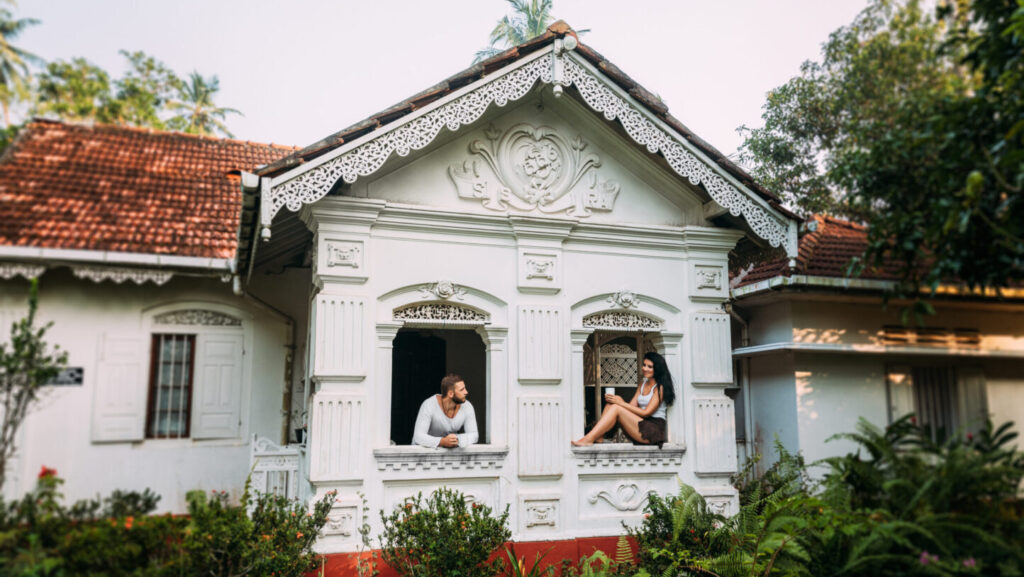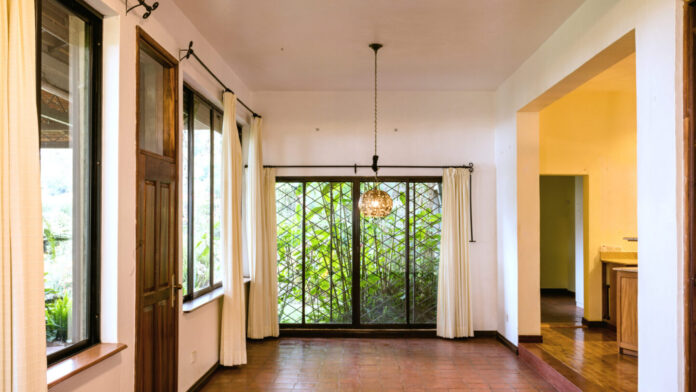By The Frontpage Journal
Step inside a traditional Sri Lankan home, and you enter a world where architecture, family history, and hospitality blend seamlessly. More than just a shelter, the home is a living reflection of ancestry and cultural values, carefully designed to nurture relationships and honor both the past and present. It is a place where space carries meaning, and every corner tells a story of connection.
Sri Lankan homes often follow principles shaped by centuries of tradition. Open verandas, airy courtyards, and gently sloping tiled roofs work together to create a comfortable environment suited to the tropical climate. Natural materials such as wood, clay, and stone are preferred not only for their beauty but for their harmony with nature. These design choices also reflect a cultural respect for balance and simplicity, ensuring the house breathes and flows with its surroundings.
Inside, the layout often reveals social dynamics and values. The mandapaya, or central hall, serves as the heart of the home—a space for family gatherings, religious rituals, and welcoming guests. Here, ancestral photos, oil lamps, and framed blessings frequently adorn the walls, linking generations and emphasizing reverence for heritage. The presence of a family shrine or small altar is common, where daily offerings and prayers create a spiritual connection that grounds the household.
Hospitality in a Sri Lankan home is a sacred duty. Visitors are greeted warmly, often with a cup of freshly brewed tea or a plate of homemade sweets. This act of welcoming goes beyond politeness; it embodies generosity and openness, reinforcing social bonds and community. The design of the home supports this ethos. Seating arrangements encourage conversation, and shared spaces invite lingering rather than hurried visits.

The kitchen is another vital space that combines function with cultural expression. Traditional kitchens often feature a wood-fired hearth or clay stove and are arranged to facilitate preparation of rich, aromatic curries and rice dishes. The aroma of spices—cinnamon, cardamom, curry leaves—fills the air, connecting the culinary arts to ancestral knowledge and daily life.
Beyond the physical, Sri Lankan homes reflect a worldview where family and community are intertwined. Extended families often live close by or in the same compound, allowing for constant support and shared responsibilities. Celebrations, religious festivals, and rites of passage bring relatives together, strengthening bonds and passing down customs.
Modern influences have introduced new materials and styles, but many homes continue to honor traditional principles, blending old and new in thoughtful ways. Contemporary Sri Lankan architects and interior designers often incorporate traditional elements—such as carved wooden panels or patterned floor tiles—into modern layouts, preserving cultural symbolism while meeting today’s needs.
For visitors from abroad, stepping into a Sri Lankan home is an invitation into a culture that values warmth, respect, and the continuity of life’s rituals. It is a reminder that architecture is more than bricks and mortar—it is a vessel for identity, memory, and the spirit of welcoming.
In Sri Lanka, the home stands as a testament to the delicate balance between ancestry and living culture. It is where the past is honored, the present celebrated, and every guest is made to feel like family.




